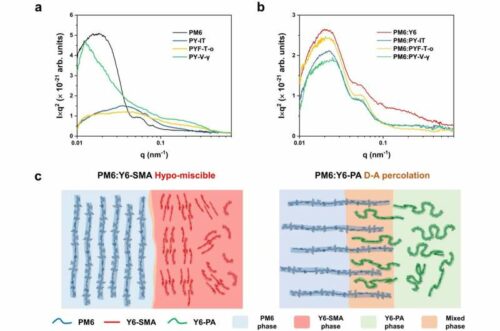Discover how investigating the electron-accepting molecule Y6 is revolutionising organic photovoltaics, offering new hope for sustainable energy solutions.

A team of researchers led by Professor Philip C.Y. Chow from the University of Hong Kong’s Department of Mechanical Engineering has achieved a groundbreaking advancement in organic photovoltaics (OPV), potentially revolutionizing sustainable energy solutions. Their study marks a significant milestone in the quest for efficient and durable solar energy technologies.
Organic photovoltaics, utilizing cost-effective, printable, and eco-friendly polymer semiconductors, offer immense promise for renewable energy generation. However, the soft nature of polymers has posed a persistent challenge in developing OPV devices with both high efficiency and long-term stability. The team’s research focuses on a electron-accepting molecule, Y6, which, when polymerized, demonstrates exceptional potential in enhancing the efficiency and stability of OPV devices. Through meticulous investigation employing femtosecond laser pulses, the researchers unveiled the pivotal role of controlling the aggregation degree of polymerized Y6 acceptors (Y6-PAs) in facilitating electricity generation.
The team discovered that Y6-PAs exhibit superior miscibility with donor polymers compared to conventional small molecular acceptors, enabling the formation of a nanoscale percolation network at the heterojunction interface. This phenomenon inhibits the aggregation of Y6-PAs, thereby enhancing charge generation efficiency and preserving the morphology of the polymer blend, crucial for sustained device performance under solar illumination. Professor Chow expressed his excitement about the implications of their discovery, envisioning a future where efficient and stable polymer-based solar PV panels seamlessly integrate into various environments, from buildings to electronic products and even clothing.
The collective effort of these researchers not only advances our understanding of organic photovoltaics but also brings us closer to realizing sustainable and viable solar energy solutions for everyday applications.













